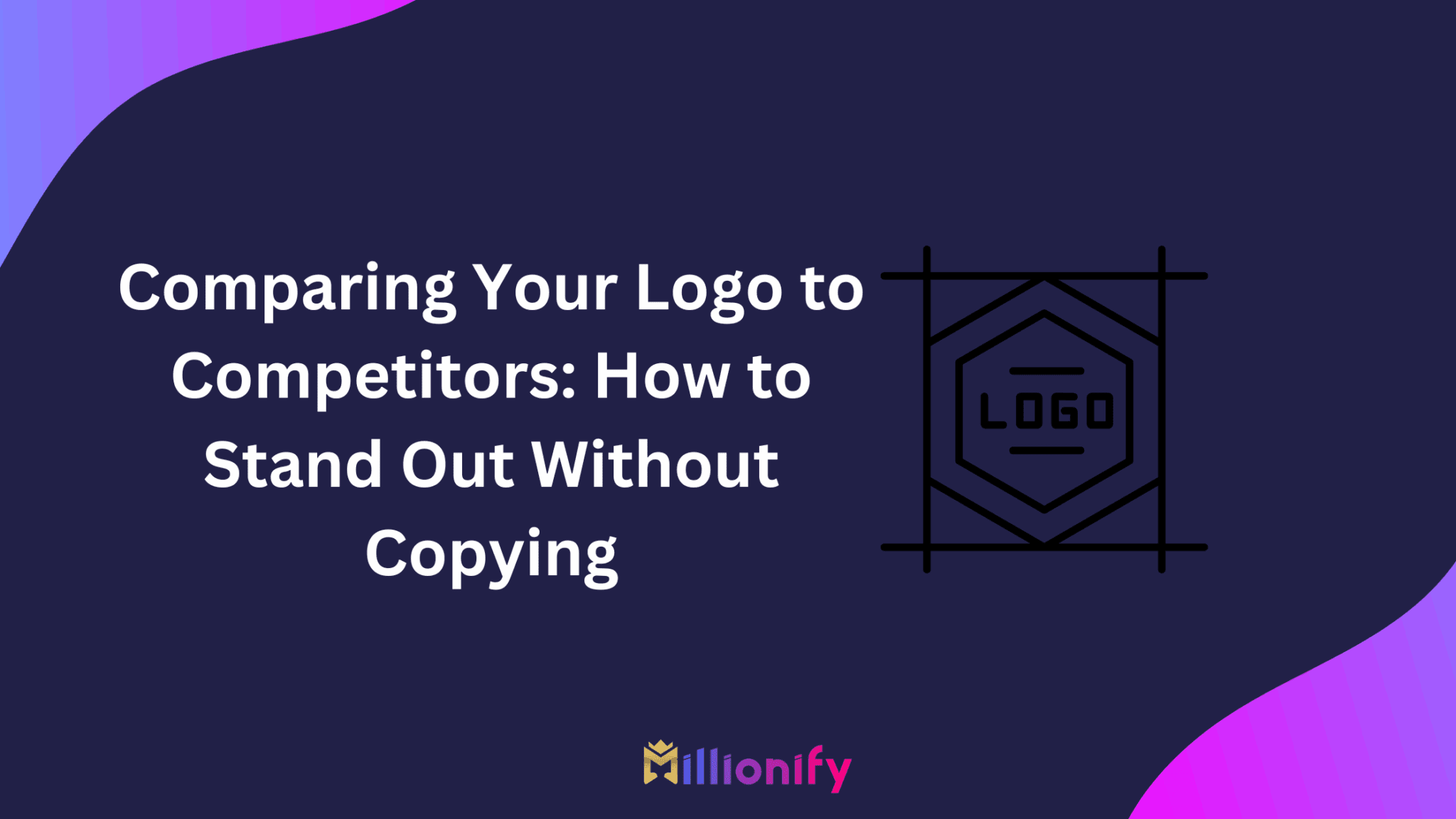Your logo is the face of your brand—literally. But how do you know if it actually stands out? In a world where hundreds of brands might be in your niche, comparing your logo to competitors is one of the smartest (and most underrated) moves you can make.
Let’s unpack the why, how, and what-to-do-next when you’re sizing up your logo against the competition.
Why You Should Compare Your Logo to Competitors
Here’s the deal: standing out in a sea of sameness is hard. But being different just for the sake of it isn’t smart either. Here’s why doing a competitive logo analysis is crucial:
- Understand industry trends (and avoid cliches)
- Spot missed opportunities to differentiate
- Ensure your design feels modern and aligned with your audience
- Avoid accidental similarities that may confuse customers
Think of it like dating apps
You want to be the profile that stands out for the right reasons—not the one with the same gym selfie as everyone else.
Step-by-Step: How to Compare Your Logo to Competitors
1. Identify Your Top 5-10 Competitors
Start with:
- Direct competitors (local or industry peers)
- Indirect competitors (same audience, different product)
- Aspirational competitors (the brands you want to be like)
2. Collect Their Logos
Save high-quality versions from:
- Websites
- LinkedIn profiles
- Google image search
Create a simple table like this:
| Brand | Logo Style | Color Palette | Font Style | Symbol/Icon? | Overall Vibe |
|---|---|---|---|---|---|
| Brand A | Wordmark | Blue & Gray | Sans-serif | No | Corporate, Clean |
| Brand B | Combination | Red & White | Script | Yes | Energetic, Bold |
3. Look for Common Patterns
Ask yourself:
- Are they all using similar colors?
- Is everyone going for minimalism?
- Are symbols or icons a thing in your niche?
4. Analyze Where You Fit (or Don’t)
Be brutally honest:
- Does your logo get lost in the mix?
- Is it too generic? Too trendy?
- Does it actually reflect your brand voice?
Use a simple 1-5 scoring matrix:
| Criteria | Your Logo Score (1-5) |
| Originality | 3 |
| Visual Appeal | 4 |
| Brand Relevance | 4 |
| Industry Differentiation | 2 |
| Scalability | 5 |
What to Do If Your Logo Falls Flat
Don’t panic. This is a golden opportunity to improve. Here’s how:
A. Refresh the Design
Small tweaks can go a long way:
- Update the font for readability
- Adjust colors to evoke stronger emotions
- Simplify or modernize icons
B. Redesign with Purpose
Work with a professional who understands:
- Your mission & vision
- Brand personality
- Target audience psychology
Tools like Looka, Canva Pro, and Adobe Express can be starting points—but investing in a designer often pays off long-term.
Logo Comparison Pitfalls to Avoid
- Copying competitors: Inspiration is fine; duplication isn’t.
- Falling for trends: Don’t redesign every year just to stay trendy.
- Ignoring audience feedback: Test logo options with real users or polls.
Competitive Logo Analysis Template
Download or create a Google Sheet using this structure:
| Brand Name | Logo Image | Color Codes | Typography | Unique Element | Overall Impression |
This lets you visually audit what others are doing—and find your own space.
Final Thoughts: Find Your Own Lane
Comparing your logo to competitors isn’t about fitting in – it’s about finding your sweet spot between familiar and fresh. Do the research, embrace objectivity, and remember:
Your logo should say who you are without saying a word.
FAQs: Comparing Your Logo to Competitors
1. How often should I analyze competitor logos?
Once every 12-18 months is good enough unless there’s a major rebrand happening in your industry.
2. What tools can help me compare logos?
Try Canva, Looka, Adobe Express, or even Figma for side-by-side visuals.
3. Should I follow logo trends?
Use trends as inspiration but don’t let them dictate your design.
4. Is it worth hiring a logo designer?
Absolutely—especially if you’re doing a full brand revamp or starting from scratch.
5. Can a logo actually impact customer trust?
Yes! A professional, relevant logo builds instant credibility and can impact brand recall significantly.



